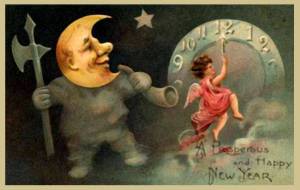There are a lot of exciting things happening in 2017. Many are covered in detail on large astronomy web sites like Sea and Sky: http://www.seasky.org/astronomy/astronomy-calendar-2017.html
Here are just a few highlights to consider.
11 February 2017 – Lunar Eclipse
Following on from the full moon earlier on the same day, the moon will pass into the edge of the Earth’s shadow for a “penumbral lunar eclipse.” We should be in a great position to see the moon darkening in Ontario. Here’s a link to a NASA PDF on the event: https://eclipse.gsfc.nasa.gov/LEplot/LEplot2001/LE2017Feb11N.pdf
1 April 2017 – Mercury at Greatest Eastern Elongation
The tiny planet Mercury will be visible in the evening sky in early spring; on 1 April it reaches its greatest eastern elongation, and will be visible in the evening sky at sunset.
7 April 2017 – Jupiter at Opposition
On 7 April the Earth will pass directly between Jupiter and the sun. The planet will be very bright in the night sky, rising at sunset. Even a small telescope should reveal the four Galilean moons of our solar system’s largest planet.
15 June 2017 – Saturn at Opposition
In mid-June Saturn and its magnificent rings will be as bright as possible this year. Like Jupiter in April, at opposition the Earth lies directly between Saturn and the sun. Rising at sunset, the planet will appear as a fully-illuminated disk through a modest telescope, nestled within its amazing rings.

Saturn will be worth watching in 2017 on another front. The Cassini mission is drawing to a close. Throughout the year, NASA mission controllers are swinging the wonderful car-sized spacecraft through Saturn’s rings for the first time, willing to take risks at the tail end of the voyage. Launched 20 years ago (1997), Cassini reached Saturn in 2004 and has been performing nearly flawlessly ever since. Later in 2017 the mission will be brought to an end and the spacecraft will be plunged into Saturn itself, a fiery demise to ensure that the environments of Titan and the other moons of Saturn are not contaminated. The feature image on this post is an artist’s rendering of Cassini and its attached Huygens probe undergoing the orbital insertion maneuver over Saturn in 2004 (Public Domain image; source NASA: http://photojournal.jpl.nasa.gov/catalog/PIA03883).
21 August 2017 – The Great Eclipse
Perhaps one of the big events in 2017 will be the “Great Eclipse” – a total solar eclipse that will cross the continental United States from west to east coasts. On Monday 21 August 2017 the moon will pass directly between the Earth and the Sun, casting a vast circular shadow and giving millions of people a chance to see a true natural spectacle. Totality will pass through states like Kentucky and Tennessee, but from Ontario we will still see a great partial eclipse in the afternoon. Here’s NASA’s posting for eclipse information: http://eclipse.gsfc.nasa.gov/SEplot/SEplot2001/SE2017Aug21T.GIF
13 November 2017 – Close Conjunction of Venus and Jupiter
Just before sunrise Venus and Jupiter will be very close to each other in the sky – just 0.3 degrees apart, or less than the diameter of the full moon.
I hope you can get out and enjoy these and other exciting sky events in 2017! As we get closer to each I will post additional information on viewing – and when possible taking pictures of – these events.


